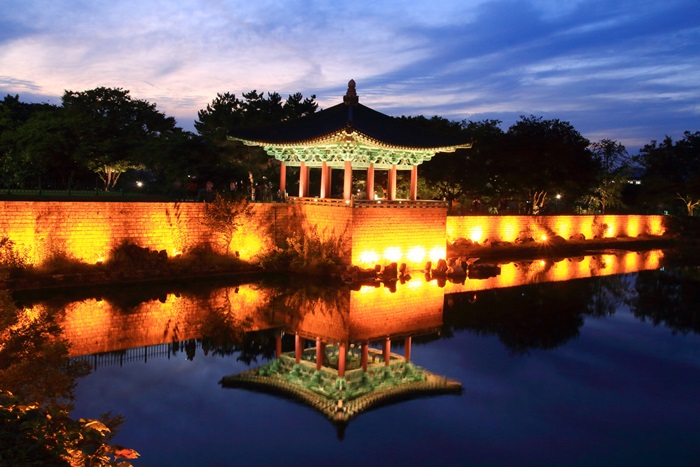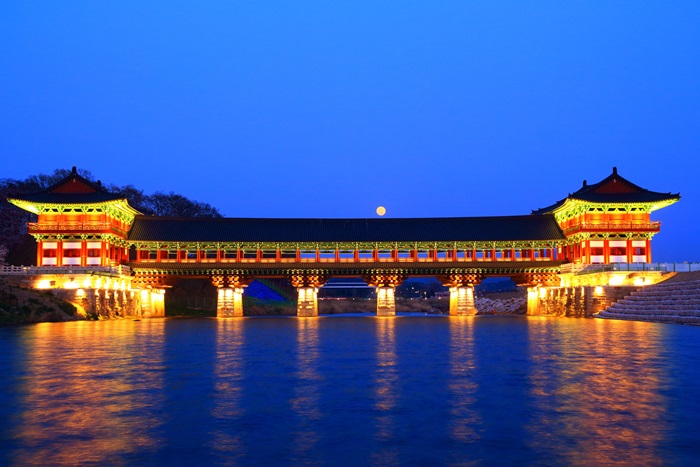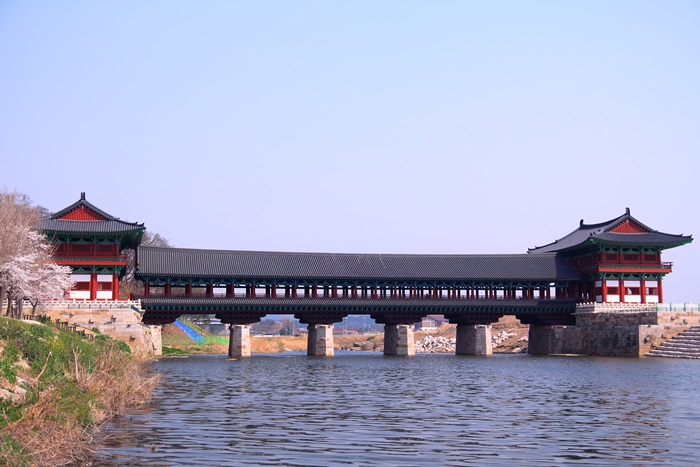
Donggung Palace and Wolji Pond boasts of the historic beauty of the Silla Dynasty.
By Korea.net Honorary Reporter Salwa Elzeny from Egypt
Photos = Ma. Lilia Pedellume
“Look deep into nature, and then you will understand everything better.” - Albert Einstein
Tourists in Korea often visit famous places such as Seoul, Busan and Jeju Island because they do not fully know the beauty of all Korean cities. There is so much magic and beauty on the Korean land and today we will head to the beautiful city of Gyeongju. It is located on the southeast coast and is a picturesque city.
From the moment you enter this city you will be impressed by the unique and wonderful Korean architecture that brings you back to the Silla era (57 B.C.-A.D. 935). It appears everywhere in houses, gates, restaurants and cafes—all the buildings inside the city—and reminds me of Aswan, the Egyptian city located in the south of Egypt. The two cities look very similar in that all the buildings in Aswan are built in the original Nubian style (traditional and historical style). It is the largest archaeological city in Egypt, just like Gyeongju, which is filled with antiquities, ancient palaces and great history. Through your trip in Gyeongju, you will feel you have returned to antiquity.
This city needs more than a day to enjoy the beauty of nature and its history.

Woljeonggyo Bridge shows the traditional architectural style of Silla.
The route from Seoul to Gyeongju is about four hours by bus or car. On our way to Gyeongju we stopped to eat bibimbap in one of the excellent traditional Korean restaurants. It was the most delicious bibimbap dish I have ever tasted in my life. It was hot and made in the original way and is very suitable for Arab and Muslim tourists. It’s like Egyptian Koshary, which is a mixture of vegetables with rice.
During our stay there, we visited the ancient Bulguksa Temple, which dates back to the 8th century under the Silla Kingdom. It was added by UNESCO to the World Heritage List in 1995. I liked it so much and my friends from the Bhutanese Kingdom prayed there. This was the first time they had visited an ancient Buddhist temple in Korea. The temple is gorgeous and the building style is truly outstanding.
In addition, we visited the reconstructed Woljeonggyo Bridge. It is the first bridge we had seen designed in the traditional Korean style. Also the site of Donggung Palace, one of the ancient palaces of the Silla era that includes Wolji Pond; it has three central islands and there are a number of pavilions, including Imhaejeon, which was built beside the lake and was used for celebrations and banquets and also as a prince's palace. Anapji is the best example of the garden and lake construction of this period. The current lake and archaeological sites were reconstructed from 1975 to 1980. This was the place where King Gyeongsun, the last king of the Kingdom of Silla, invited Wang Geon, the founder of the kingdom of Goryeo, to a banquet to seek his aid.
We spent a night there in one of the beautiful resorts in Gyeongju, and the hotels there were very distinctive too.
I invite all my friends and Arab readers to visit Gyeongju, a city that you will remember for a long time because of its beauty. There are many treasures in Korea that you have to discover.

Woljeonggyo Bridge allows two different attractive views to visitors during the day and during the night.
wisdom117@korea.kr
* This article is written by a Korea.net Honorary Reporter. Our group of Honorary Reporters are from all around the world, and they share with Korea.net their love and passion for all things Korean.